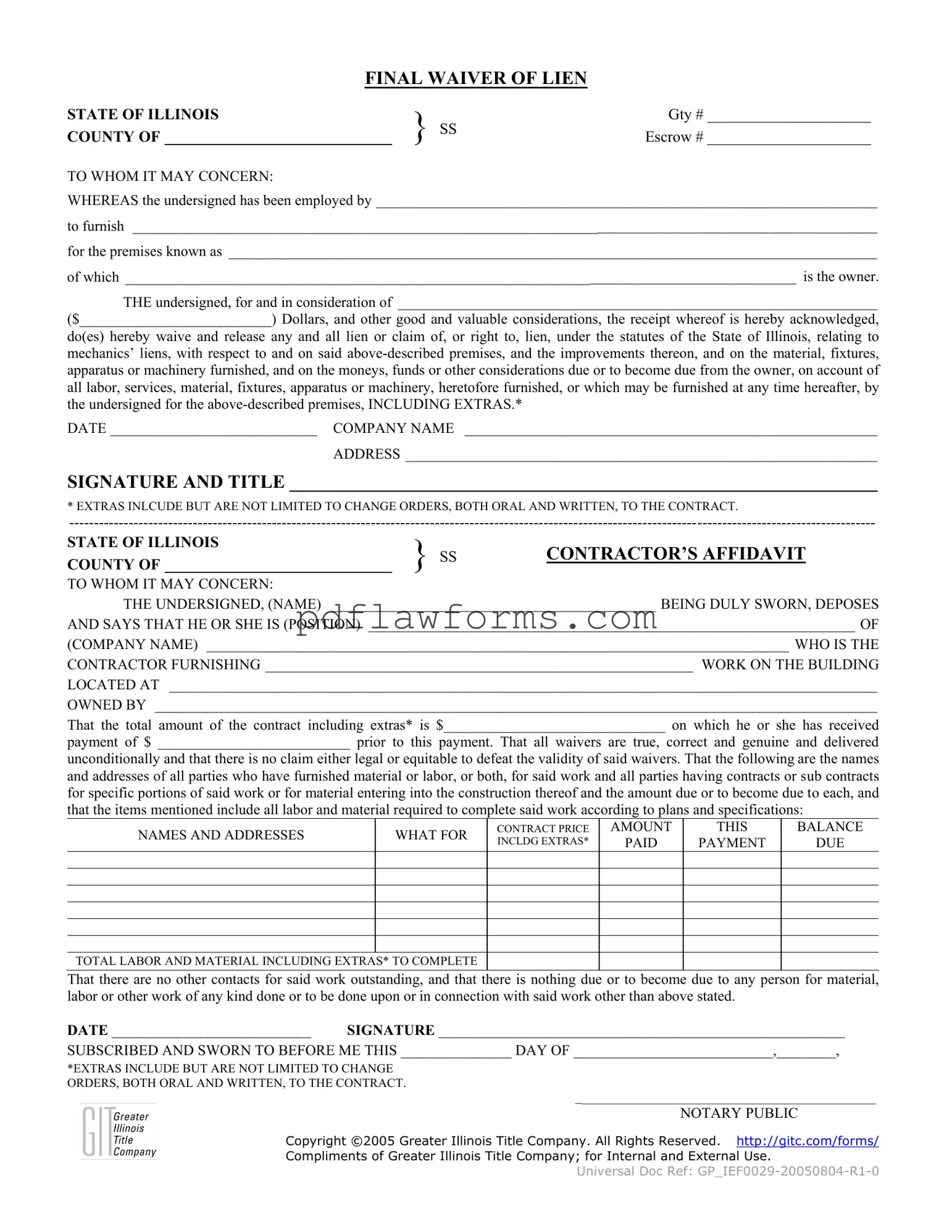Fill Your Illinois Final Waiver Of Lien Template
The Illinois Final Waiver of Lien form is a legal document that serves to release any claims or liens against a property once payment has been received for work performed. This form is essential for contractors and subcontractors in the construction industry, ensuring that they relinquish their rights to file a lien after settling accounts. Completing this form helps protect both the contractor and the property owner by clarifying financial obligations.
To fill out the Illinois Final Waiver of Lien form, please click the button below.
Make My Document Online
